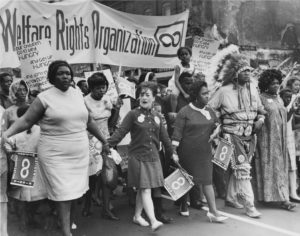
I’ll try to make this brief. The apologetics and schadenfreude and recrimination are flowing fast. Too fast for good thinking. But this is important. A divide has emerged on the left between (1) those who believe Democrats need to develop a credible appeal to the archetypal (white, rural, high school-educated) Trump voter; and (2) those who believe these voters are irredeemably racist, and that any effort to include them in a coalition would entail a compromise with white supremacy.
I’ve largely avoided this conversation until now. It’s been marked by bad faith and straw men on both sides. And I think the media’s preoccupation with these voters—over, say, working class people of color—is itself an effect of a white supremacist lens. Why are media organizations willing to spend so much money and energy seeking to understand and empathize with the plight of certain members of the underclass and not others? As is often the answer to American questions: racism.
That being said, I don’t think there’s a sufficient way forward for left politics that does not try to organize and win over white workers. It may be true that due to demographic change, Democrats won’t need white working class voters to win presidential elections in the near future. But they do need them to win back state legislatures, gubernatorial races, senate and congressional seats. The thing about these “irredeemably racist” hinterland states is that they all have cities, and in those cites are minorities. These states also have women and immigrants and LGBT people and disabled people. As it stands, the marginalized populations in red states live under the rule of increasingly authoritarian statehouses and governors, whose priorities include depriving gay & trans people of their rights & safety, depriving poor and black people of the franchise, depriving working people of the right to organize, and depriving women of the right to get an abortion—not to mention empowering police, prosecutors, and immigration enforcement.
Unless leftists are content to condemn these populations to permanent white, nativist, reactionary rule, we have no choice but to prioritize organizing—yes, “winning over”—white workers in these states. Make no mistake: the most inspiring organizers in the country, many of them black and brown and gay and trans, are already and have long been doing this work. But the instinct among some liberals right now to write off Trump-voting states altogether is both politically and morally untenable and insulting to the organizers struggling—in an often hostile environment—to empower oppressed communities in the South and upper Midwest.
Crucially, the point is not to develop an economic program that simply ignores anti-racist concerns. Trump’s working class voters cannot be won over to a progressive coalition simply by bribing them with economic rewards. White supremacist ideology is an insidious thing. The very means by which struggling white workers lives could be materially improved—redistribution of wealth, government investment in communities and education—have been stigmatized as handouts to minorities. As we know, racism itself is among the chief obstacles to the implementation of a more egalitarian welfare state. Rather, the task—as it has always been—is to convince these workers that they are part of class that includes black and brown people, but that does not include their wealthy white bosses. That is: that they are part of the working class; and that the antipathy they feel towards elites is justified and shared by the people of color scapegoated by their political leaders.
Creating a multi-racial, anti-racist populist front will be difficult. There’s no roadmap. But it’s been done before—to varying degrees of success—by labor unions during the Black Freedom Struggle, by communists organizers in the South, by the CIO, by the New Deal coalition. A reinvigorated labor movement is an indispensable part of the way forward. Throughout history, unions have been the best vehicle by which white workers come to identify as workers first. That remains true today.
It’s going to be hard. But we don’t have a choice. Wealthy whites in red states, who benefit from the entwined dual-regime of white supremacy and capitalism—what we should insist on calling “racial capitalism”—will continue to fight with ever greater resources to preserve and further entrench the status quo. White workers share their interests, but not all of them. That’s the opening. It always has been.
I watched one of Trump’s last speeches before the election. In it, he said, “Tomorrow, the American working class will strike back.” I was struck. No contemporary Democratic politician would (or could, credibly) say those words. Afraid of scaring off their donors or being red-baited, most Democrats won’t even utter the phrase “working class”—preferring the capacious and increasingly meaningless “middle class” or, at best, “working families.” But Trump said it. His rural and exurban white supporters have a class consciousness of sorts. They despise elites. They feel that the system is rigged. But that antipathy is entirely entangled with their fear of a black president, of eroding racial and gender hierarchies, and their perception that multi-cultural elites are helping minorities at their expense. Trump can say “working class” because everyone in his audience hears the unsaid word “white” preceding it. It is, as it has ever been, the left’s task to build a mass political movement where there are no words silently preceding the term “working class.” It’s not hyperbole to say that everything depends on it.